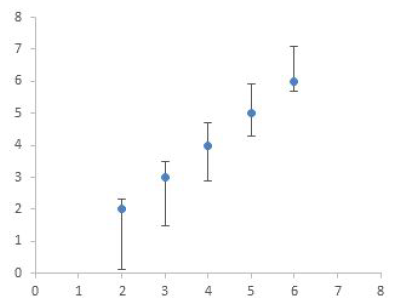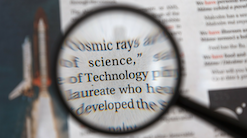Accuracy Matters! First Time, Every Time
Read a NIST publication that explains why accuracy matters, and think through some follow-up questions.
Teacher Tips!
Many activities have a teacher view and a student view, and teachers can switch between those views by clicking the blue button in the upper-right. Students will not see this option - only teacher accounts see both views. The teacher view will start with overview text, if available, to frame the activity and get you started. This view will also have teacher tips and suggested answers to student questions spread throughout the activity. The teacher text interleaved with student-facing text will be in italics and should appear as a different color on your screen. Teacher tips are designed to help you deliver a learning experience that is best suited for your classroom.
Printing Reminder
Whichever view you see on your screen is what will print. You can print this activity without teacher tips by selecting the student view, or print with teacher tips by switching to teacher view. Simply use the standard print function available for your web browser. No extra steps are required.
Title of Activity:
Accuracy Matters! First Time, Every Time
Curriculum Collection:
NIST: Universal Constants, Lesson 1
Description:
Students read a primary source published by NIST about why accuracy matters, and answer follow-up comprehension questions.
Target Grade Level:
Grades 8-12
Discipline or Course:
Physical Science
Time Frame:
One 45-minute session
Suggested Grouping:
Whole class
Key Vocabulary:
- Accuracy
- Standard
Teacher Prep:
Read the article ahead of time and try to anticipate any trouble areas your students might experience.
STUDENT CONTENT BELOW
Read the article by Elizabeth J. Gentry and Georgia L. Harris.
Show your understanding by responding to these questions.
- The word “tolerance” is used in the first paragraph. In conversation, we talk about things we can or cannot tolerate (like mustard on your hot dog or very screechy music.) What is the meaning of the word to metrologists (measurement experts)?
- How much variation could you tolerate in an estimate of how long it will take you to get to an appointment?
- What field or product would have extremely low tolerance?
- Describe something in your everyday life that it is important to measure.
- What units do you measure it in?
- What degree of uncertainty could you tolerate in that measurement?
- The graph shows a series of values with “error bars.” What do they mean? Why does knowing uncertainty in a measured value provide confidence in the measurement result?
It quantifies the boundaries or limits within which a measurement result should agree with a true quantity value. - The text says, “It’s a wise practice to ask for the measurement uncertainty and use it to assess the quality and precision of a measurement result.” Imagine you are managing your friend’s campaign to be elected as a local representative. How would this apply?
Students might imagine polls and their margin of error. - Restate the following to explain it as simply and clearly as possible: “the VIM defines “accuracy” — as it’s related to a measurement result — as the “closeness of agreement between a measured quantity value and a true quantity value of a measurand.” How is this similar to or different from the definition of accuracy we’ve used so far?
The “true quantity” is what we have referred to as a standard (now, a constant.) - Give an example of a real-life “black dot” and how it might affect the people involved.
A very visible error in any study or process can discredit it or create doubt about subsequent work. For example, when NASA confuses units, they create doubt about future missions.





